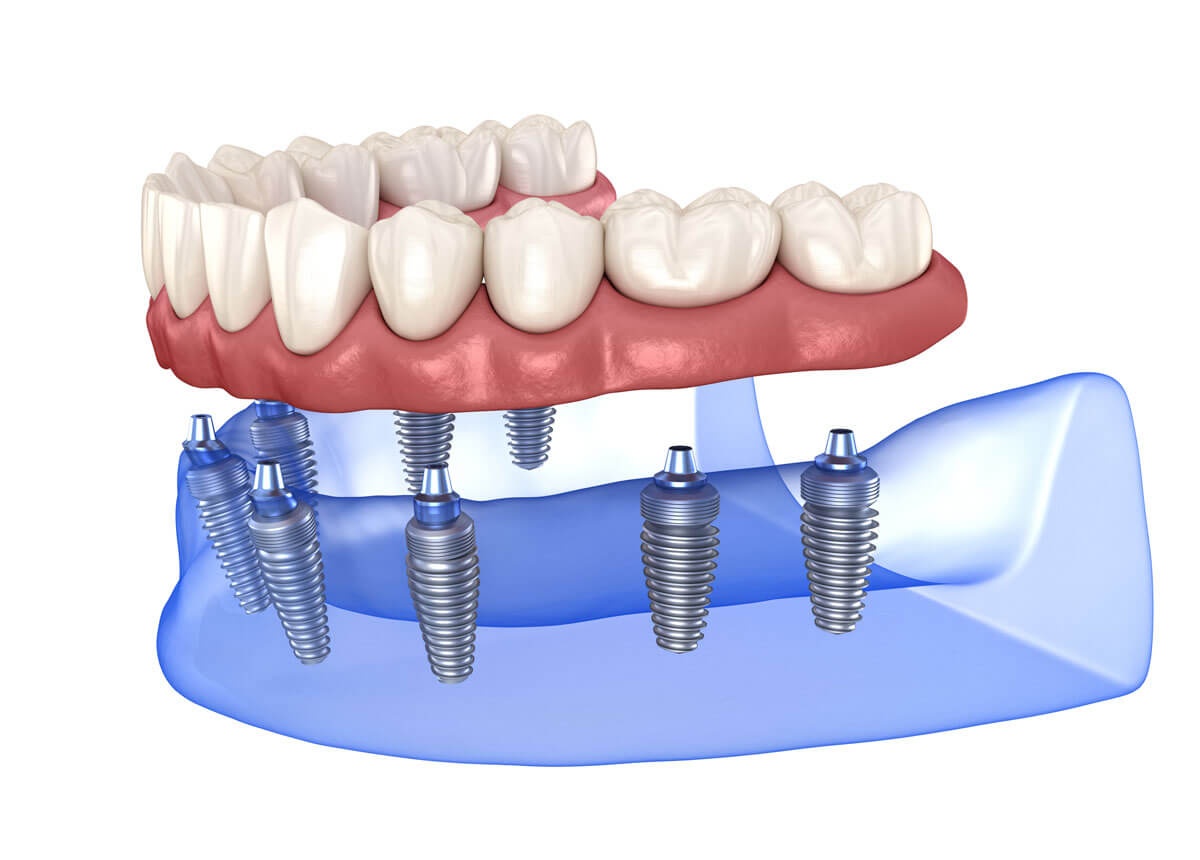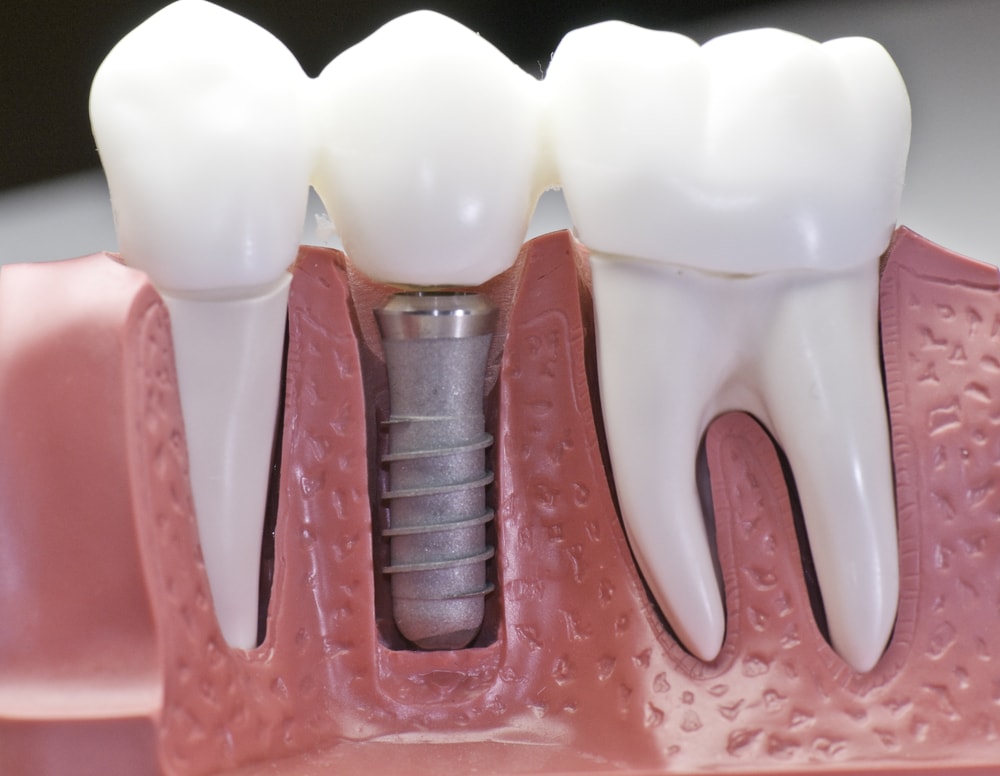The Main Principles Of Dental Sense
The Main Principles Of Dental Sense
Blog Article
Dental Sense - The Facts
Table of ContentsSome Ideas on Dental Sense You Need To KnowThe Dental Sense DiariesFascination About Dental SenseOur Dental Sense PDFs
are clinical gadgets surgically dental implanted right into the jaw to bring back an individual's capability to eat or their look. They offer support for artificial (fake) teeth, such as crowns, bridges, or dentures. When a tooth is shed as a result of injury or illness, a person can experience issues such as quick bone loss, faulty speech, or adjustments to chewing patterns that cause discomfort.Oral dental implant systems include a dental implant body and dental implant abutment and may likewise consist of an abutment addiction screw. Same day dental implants. The dental implant body is surgically placed in the jawbone instead of the tooth's origin. The dental implant abutment is usually affixed to the dental implant body by the joint fixation screw and expands through periodontals right into the mouth to support the affixed artificial teeth
(https://www.pageorama.com/?p=dentalsense1)Framework of The Dental Implant System picking oral implants, talk to your oral supplier regarding the possible benefits and threats, and whether you are a prospect for the procedure. Things to take into consideration: Your overall health and wellness is a vital variable in determining whether you are an excellent prospect for dental implants, for how long it will require to recover, and the length of time the implant may remain in location.
Cigarette smoking might impact the recovery process and reduce the long-term success of the implant. The recovery procedure for the implant body might take a number of months or longer, throughout which time you typically have a short-term abutment in location of the tooth. the oral implant procedure: Thoroughly follow the oral health guidelines provided to you by your dental provider.
Some Known Details About Dental Sense
Implant failure can cause the requirement for one more operation to deal with or change the implant system. Recovers the capacity to chew Recovers cosmetic appearance Assists maintain the jawbone from shrinking due to bone loss Maintains the health and wellness of the surrounding bone and periodontals Aids keep surrounding (close-by) teeth secure Enhances quality of life Damages to bordering all-natural teeth during dental implant positioning Injury to the surrounding cells throughout surgery, such as sinus perforation Injury throughout surgery (for instance, fracture of surrounding jawbone) Insufficient function, such as seeming like the teeth do not bite with each other normally A sensation that the tooth hangs or turning in position resulting from an abutment screw loosening up Implant body failing (looseness of the implant body) you can try here as a result of systemic infection, which may be extra likely in patients with unrestrained diabetics issues as a result of local infection in bone and gum tissues supporting the dental implant body as a result of delayed recovery, which may be more probable in people who smoke Difficulty cleaning the gum tissues around the dental implant, resulting in bad dental hygiene Neglected gum illness Post-surgical tingling due to nerve impingement or damage Always alert healthcare service providers and imaging service technicians that you have oral implants before any type of magnetic resonance imaging (MRI) or x-ray treatments.
FDA is not knowledgeable about any kind of negative occasions reported for MRI or x-ray procedures with oral implants. Dental implants systems are usually made of products that comply with global consensus requirements of the International Company for Standardization (ISO) or ASTM International. These criteria have details of what makes a risk-free product.

An oral implant is a structure that changes a missing tooth. With screw-like tools, the cosmetic surgeon inserts an implant into the jawbone, and it acts as an anchor for a man-made tooth, called a crown.
Rumored Buzz on Dental Sense
Some people are not qualified for oral implant surgery. It is for dental doctors to run on people with: severe illnessuncontrollable metabolic diseasebone or soft cells illness or infectionIf these issues are fixed, an individual can have the surgical procedure. In, oral doctors avoid running on people with: If individuals with any of the above undergo dental implant surgery, there is a greater threat of the implant failing.

Dental implant surgical treatment is a tailored procedure. It's not the exact same for everyone. The adhering to gives a general overview of what you can anticipate your dental practitioner, dental doctor, periodontist or prosthodontist to do: Place the dental implant operatively. Provide you time to recover. Attach the post and last crown, bridge or denture.
Next, your specialist will thoroughly put the oral implant right into your jaw. If your dental implant is near the front of your mouth, your dental practitioner will make a momentary tooth for you to use till you heal.
Not known Facts About Dental Sense
During the healing stage, your jawbone should fuse to the oral implant. This procedure can take anywhere from three to 9 months.
When your implant heals, your dental expert can connect the joint (little adapter article) and your last remediation (crown, bridge or denture). This generally takes about one hour to finish and might require a second minor surgical procedure. You shouldn't really feel any kind of discomfort throughout your oral implant treatment because your company will make use of medication to numb your periodontals.
Report this page